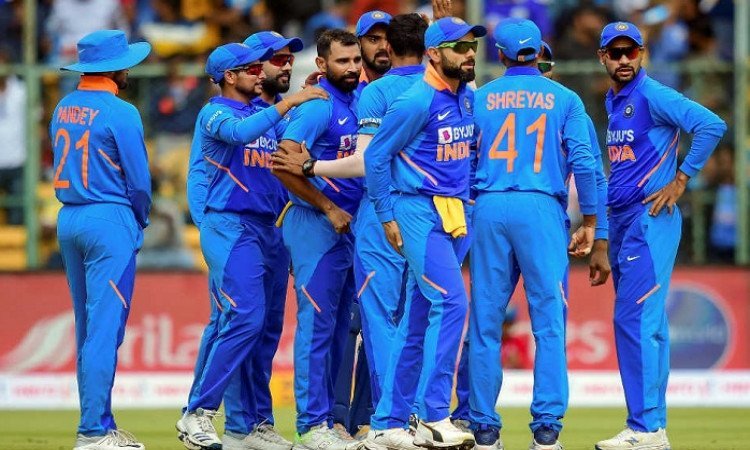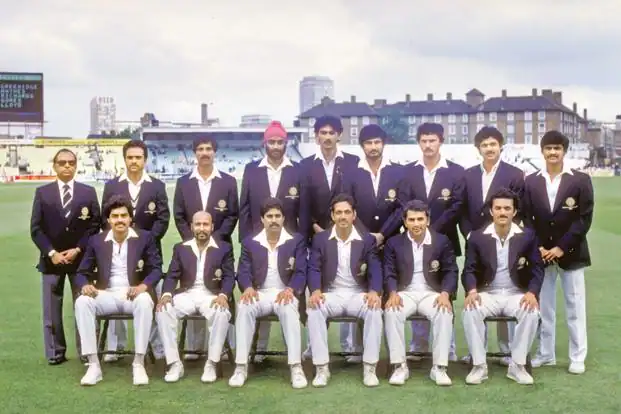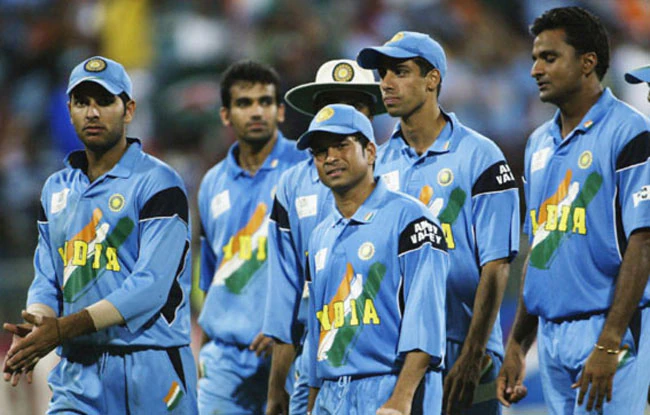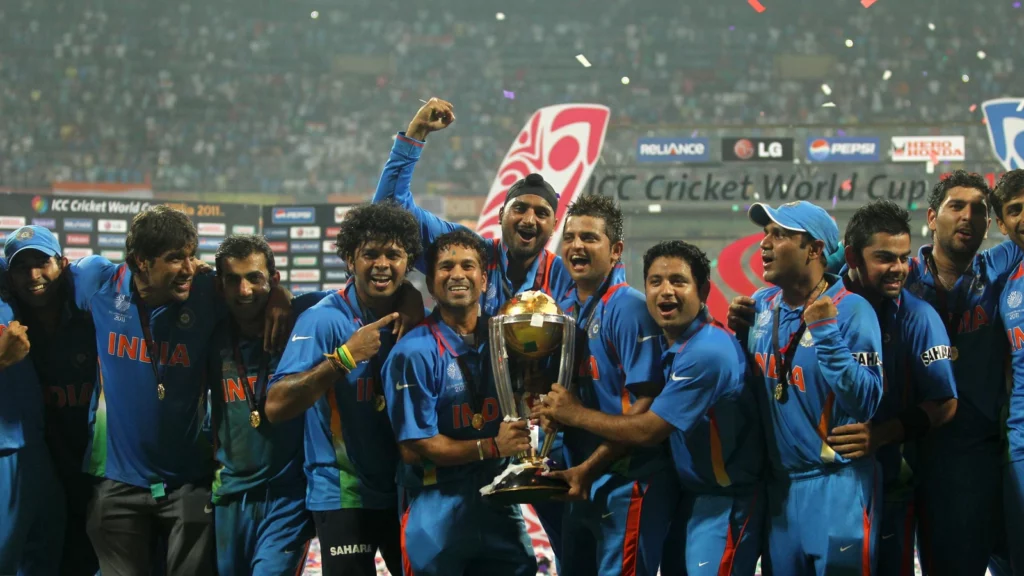Physical Address
304 North Cardinal St.
Dorchester Center, MA 02124
Physical Address
304 North Cardinal St.
Dorchester Center, MA 02124

In 1932, Indians officially played as a national team for the first time. The team’s first tour was against England under the title “All India,” led by C.K. Nayudu. Despite losing the first Test match, Team India played quite well. During this decade, India played 37 matches, including 26 first-class matches. They won 9, lost 8, and had 9 draws. Captain Nayudu was a favorite among Indian players, scoring 1,618 runs with an impressive average of 40.45.

In 1946, the Indian cricket team toured England again, marking the host team’s first series after the devastating Second World War. Although England won the series 1-0, India participated in 29 first-class matches, winning 11 and losing only 4. In this decade, India also played its first series as an independent nation against Australia in 1948. During this series, a new term “Mankading” was coined when Indian bowler Vinoo Mankad ran out Bill Brown at non-striker’s end, which caused some controversy but was within the laws of the game. As a result, this practice became known as “Mankading.”
India had to wait for two decades to record their first Test victory against any country. The historic moment came in 1952 when they defeated England by an innings and 8 runs in Madras (now Chennai). Although the series ended in a draw, this victory boosted the confidence of the Indian cricket team in international matches. India secured its first series win in 1956 against New Zealand. However, during their tour to New Zealand, India faced defeats in two matches out of four. They clinched the series 2-0 by winning two out of five Test matches.
The 1960s started with a bang for Indian cricket as they recorded their first overseas Test series win against England in 1961-62. After three consecutive draws, India won the remaining two Test matches, triumphing by 187 and 128 runs, respectively. Later in 1967-68, India defeated New Zealand 3-1 during their tour, marking their first series win outside the subcontinent.
India beat England and the West Indies in the 1971 Test series, establishing their place on the world cricket map, The Indian men had a dismal record of 15 defeats out of 19 Test matches played on English soil, but they turned the tables during this tour. India also made its ODI debut in 1974 during the Prudential Cup. Unfortunately, the hosts, England, won the series 2-0. In 1975, India secured its first ODI victory against East Africa in the Prudential World Cup. In 1979, during the start of the World Series Cup, teams were asked to choose their primary color and a secondary color to avoid color clashes. India opted for light blue as their primary color while yellow became the secondary color.
The most significant moment in Indian cricket history came in 1983 when India won the Prudential World Cup by defeating the defending champions, the West Indies, in the final. This tournament witnessed the rise of legendary players like Kapil Dev, Mohinder Amarnath, and Madan Lal. Before this win, India had also claimed victory in the Rothmans Asia Cup in 1984. Post that, they defeated Australia (1986 – 3-2), Sri Lanka (1986-87 – 4-1), New Zealand (1988 – 4-0), and the West Indies (1989 – 5-0) in ODI series

Sachin Tendulkar and Anil Kumble were two Indian cricketers who made a big impression in the 1990s, These two superstars, along with other cricketers like Mohammad Azharuddin, Navjot Singh Sidhu, and Sourav Ganguly, brought Indian cricket into a new age of dominance, India won the Texaco Trophy in 1990, and also won the Asia Cup (1991), the C&G Trophy (1993-94), the Singer World Series (1994), the Wills World Series (1994-95), and the Titan Cup (1996-97), In terms of the Indian cricket team’s jersey, they donned various shades of blue.
For the 1992 World Cup (then known as the Benson & Hedges World Cup), the team progressed with navy-blue jerseys. In the 1996 World Cup, the jersey featured light-blue as the primary color with yellow as the secondary color. In the next World Cup in 1999, the colors became lighter, with predominant yellow and the jersey manufactured by ASICS.

The 2000s witnessed some dramatic ups and downs in Indian cricket history. One of the most memorable moments was the dramatic Test victory against Australia in 2001 at the famous Eden Gardens stadium. After 16 consecutive Test wins by Australia, India faced a daunting task of following-on after being dismissed for a mere 171 runs in the first innings. However, VVS Laxman (281) and Rahul Dravid (180) produced an extraordinary partnership of 376 runs. India went on to bowl out Australia for just 212 runs in the second innings, securing a remarkable victory. India also won the 2002 ICC Champions Trophy. Another unforgettable moment came during the NatWest Series in England in 2002. Chasing a challenging target of 325 runs, India found themselves struggling at 146-5.
However, a heroic partnership between Mohammad Kaif (87*) and Yuvraj Singh (69) turned the tide, and Sourav Ganguly famously waved his shirt at Lord’s Stadium to celebrate the victory. India finished as the runners-up in the 2003 ICC Cricket World Cup, losing to Australia in the final. The 2007 World Cup in the Caribbean turned out to be disappointing for India as they failed to progress beyond the group stage, leading to anger among the fans back home. As compensation, the Indian cricket team won their first-ever ICC World Twenty20 championship in South Africa, under the leadership of MS Dhoni.
In 2011, India won the ICC Cricket World Cup, marking the first time a host nation won the trophy. With this victory, India became the third team to win multiple World Cup titles, after the West Indies and Australia. In the same decade, India also won the ICC Champions Trophy in England in 2013. This year also witnessed the retirement of the great Sachin Ramesh Tendulkar, who bid farewell to his illustrious career amidst a flurry of records and memorable moments. The 2010s also saw improvements in India’s overseas records, with memorable ODI series victories against England (3-1, 2014-15), West Indies (3-1, 2017), Sri Lanka (5-0, 2017), South Africa (5-1, 2017-18), Australia (2-1, 2018-19), and New Zealand (3-1*, 2019).

India’s cricket governing body is the Board of Control for Cricket in India (BCCI), It was established on December 4, 1928, with the aim of ending British hegemony in cricket. The board was formed by a group of players at the Roshanara Club in Delhi. Initially, there were six regional bodies as its first members. With 30 full-time employees and a net value of 3,308 crores, it is now a sizable corporation. One of the few sporting organizations in the world that doesn’t have a set structure and doesn’t follow corporate governance laws is the BCCI. Until 2006, the board operated from the residence of its president. Currently, BCCI is headquartered at the iconic Wankhede Stadium in a magnificent stone and glass mansion.
In 2016, it appointed its first CEO, Rahul Johri. With a humble beginning, the fate of the board changed at the end of 1991 when it signed a major broadcasting deal. As Indian cricket grew in popularity, the BCCI’s value skyrocketed. It signed a bumper broadcasting deal with Star Sports recently for ₹6,138 crores and also earned ₹1,079 crores from a sponsorship deal with OPPO Digital.
However, the biggest deal in BCCI’s history was related to the IPL when Star Sports paid a staggering ₹16,347 crores (approximately $2.55 billion) for the broadcasting rights. Such lucrative deals allow the board to pay hefty salaries to its players (like Kohli, who receives around ₹8 crores annually, excluding bonuses and prize money) and coaches. Being independent from the government for financial matters, BCCI operates autonomously. It is also exempted from making its balance sheet public. Today, the BCCI’s value is over ₹3,000 crores, making it the richest cricket board in the world.
Related Topic
Pakistan National Cricket Team